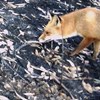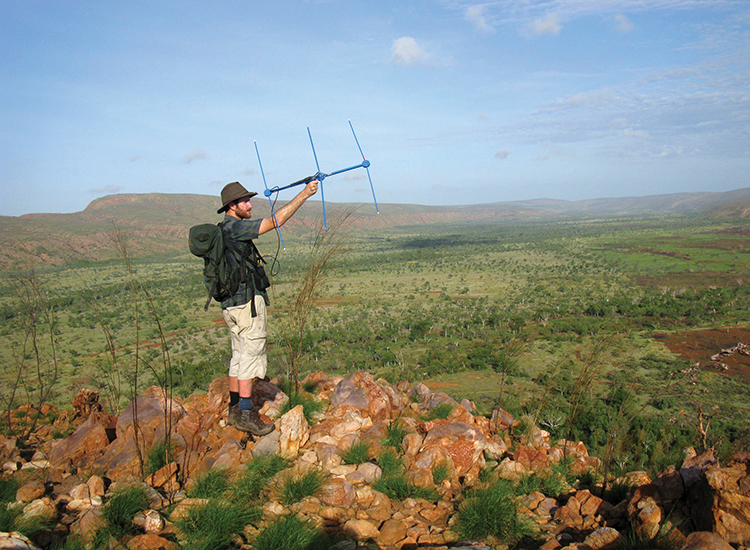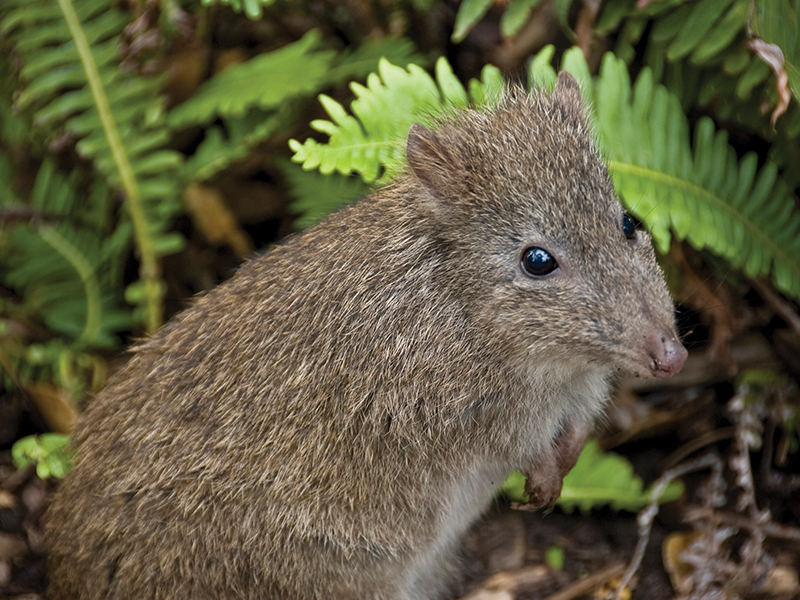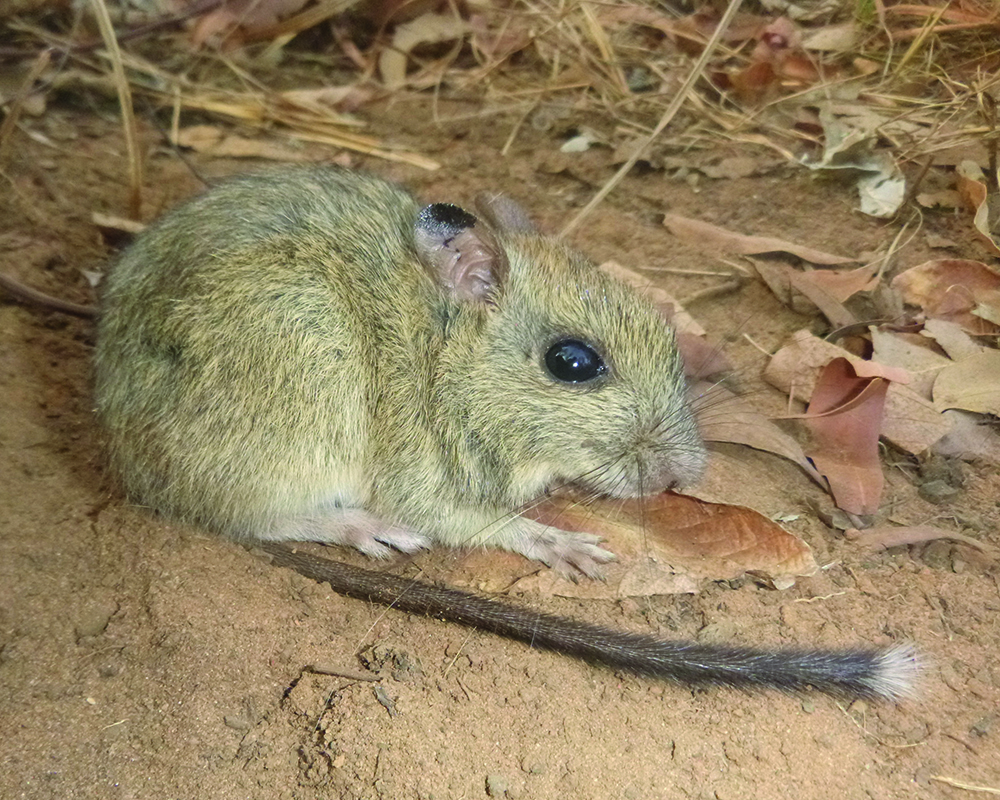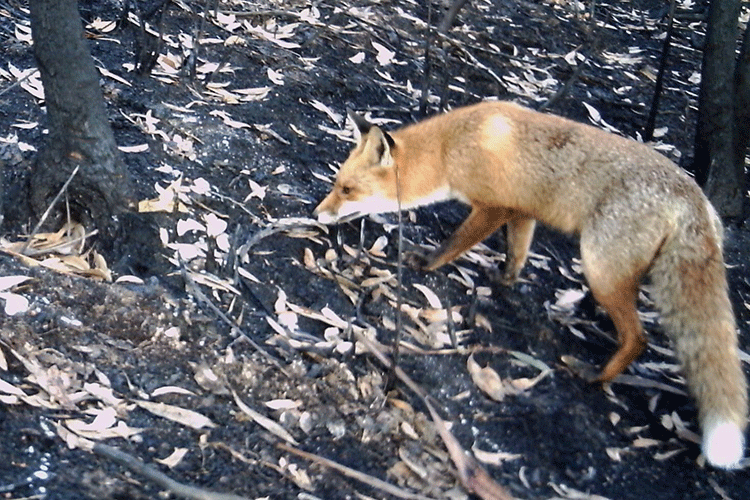
Fire leads to spike in invasive predators
Tuesday, 23 May 2017New research, just published in Journal of Mammalogy, has observed a dramatic increase in feral predators after a prescribed burn in Victoria’s Otway Ranges.
The Otway region is important for the conservation of many threatened species, including ground-dwelling mammals, such as tiger quolls and long-nosed potoroos, which are very vulnerable to foxes and feral cats. 
Tiger Quolls are found in the Otways and are impacted by introduced predators. Image: Pierre Pouliquin
The study looked at the effects of a 1200 ha burn using 54 motion-sensing cameras set out before and after the fire, and a similar layout in a non-burnt forest 10 km way.
The research was led by Dr Bronwyn Hradsky and Craig Mildwaters, from the University of Melbourne who worked closely with Parks Victoria and the Victorian Government Department of Environment, Land, Water and Planning (DELWP), who conducted the burn.
“The most startling finding was that after the fire, we detected feral cats and foxes five times more often in burnt forest,” said Dr Hradsky.
Research in tropical savannas in Northern Australia has previously shown that feral cats will travel long distances to reach a burnt area. Once the understorey has been removed by fire, remaining animals are easy to hunt.

A feral cat checks out lures placed in front of a motion camera. Image: Craig Mildwaters

A feral cat checks out lures placed in front of a motion camera. Image: Craig Mildwaters
This research in south-east Australia also found an increase in predator activity in burnt areas, so it’s possible that foxes and feral cats in south-east Australia take advantage of fires in a similar way. This indicates that after fires some native animals will be more vulnerable to predation.
Fox scats were also collected before and after the fire and showed a significant change in diet. Before the burn, most of the foxes’ diet was wallabies, which use the more open country. Foxes and feral cats also preferred sites with open vegetation.
After the burn there was a substantial increase in medium-sized native mammals in the fox scats, especially bandicoots and echidnas. Before the fire these native animals were mainly found in areas with dense understory vegetation like wiregrass that provided them with good cover. The fire removed 80% of that vegetation, potentially making them easier targets for foxes.

The Breakfast Creek fire. Image: B Hradsky

The Breakfast Creek fire. Image: B Hradsky
“Combined with the increase in invasive predator occurrence, this change in fox diet is really concerning. It indicates that land managers may need to think about integrating fox and feral cat control with their burning programs,” said Dr Hradsky.
Dr John Wright, from Parks Victoria says feral predators and fire are major management priorities for Parks Victoria and DEWLP in the Otways due to their impact on biodiversity.
“This research collaboration has helped improve our understanding and approach to managing predators and fire. It has also been important in informing the design of the recently established Otway Ark program,” said Dr Wright.
Otway Ark is a landscape-wide feral predator control program by Parks Victoria, which aims to reduce the impact of foxes and cats on native fauna, especially small mammals, in the Otway region.
“Evidence-based science like this on the threats facing Victoria’s native plants and animals is essential to achieving the targets in the Victorian Government’s recently released Biodiversity Plan,” said Mr James Todd, DELWP Director of Knowledge and Decision Systems.
The Biodiversity Plan - Protecting Victoria’s Environment – Biodiversity 2037 is a 20-year plan to stop the decline in Victoria’s native plants and animals.
“Feral cats and foxes are the two biggest drivers of native animal extinctions in Australia,” said Mr Gregory Andrews, Australia’s Threatened Species Commissioner, “they put pressure on over 100 animals that are already threatened.”
“This research in the Otways is very useful because it helps us work smarter to reduce the impact of feral cats and foxes on our animals”.
The research was supported by DELWP, Parks Victoria, the Holsworth Wildlife Research Endowment and the Australian Government’s National Environmental Science Programme.
